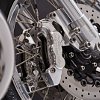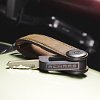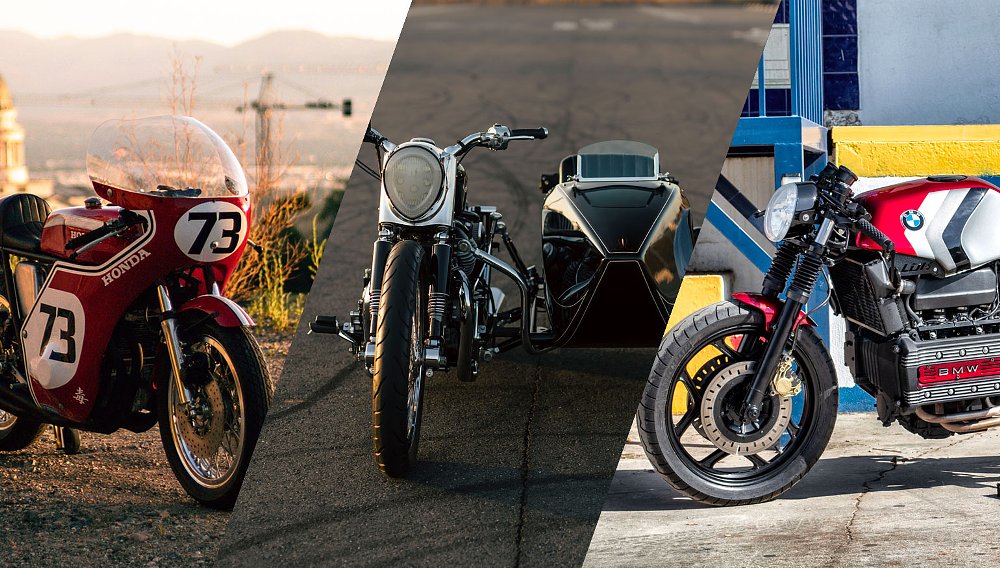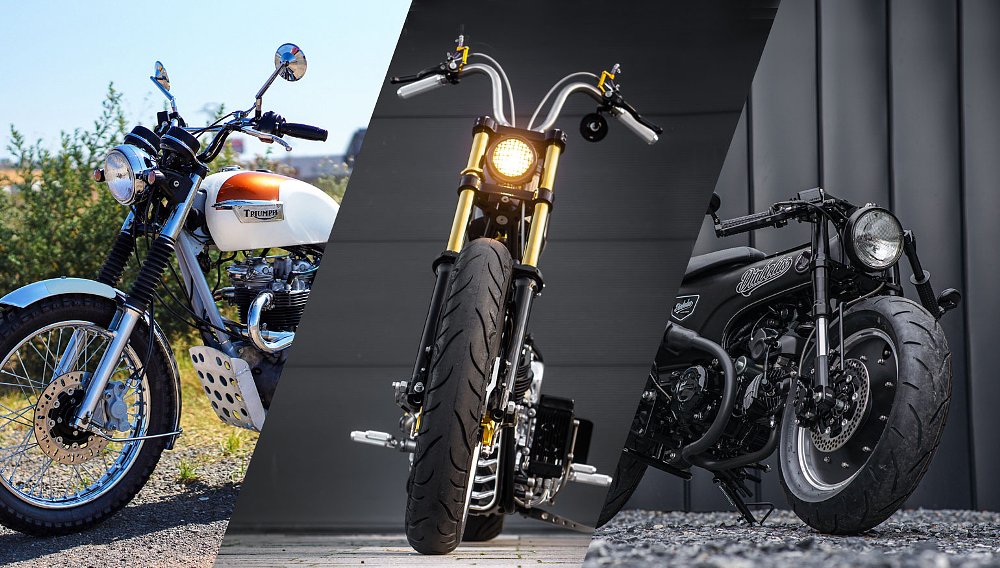Japanese builder Wedge Motorcycles delivers a showstopping BMW R100RS. Estonian workshop Renard Speed Shop releases a limited-run, reimagined R100 café racer. And Instagram powerhouse CROIG joins forces with Yamaha's Yardbuilt series to create a one-of-a-kind XSR900 that's destined to raise funds for a good cause.
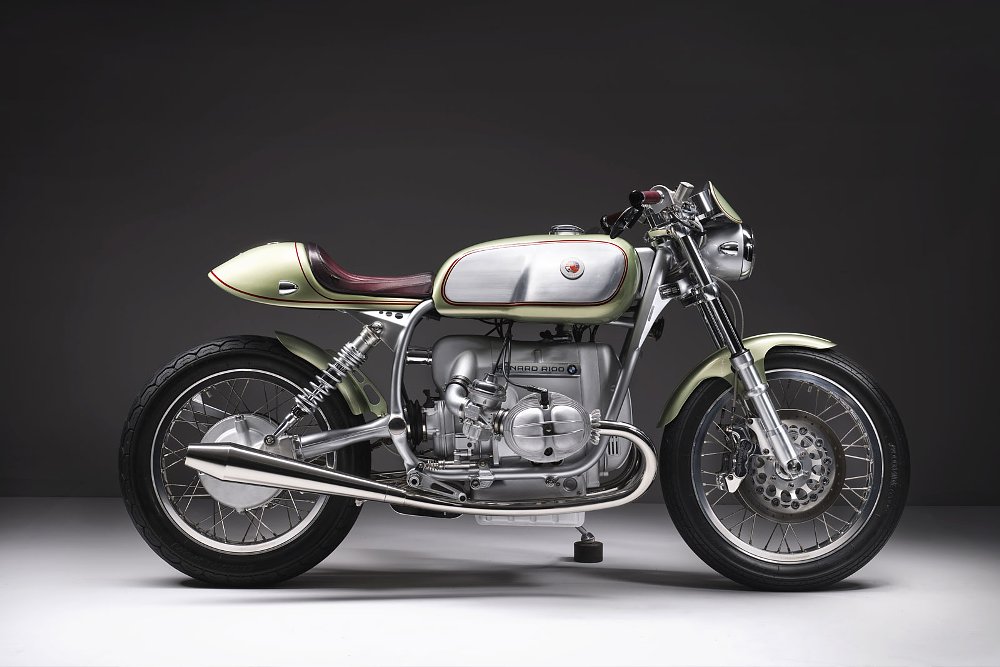
Renard Speed Shop Reimagined BMW R100
Andres Uibomäe is the man behind Renard Speed Shop (Instagram) in Tallinn, Estonia. When he launched his workshop in 2008, Andres developed the limited-production-run Renard Grand Tourer. The GT was an impressive carbon monocoque-bodied motorcycle powered by a 1,326 cc Moto Guzzi V2 which he'd designed from the ground up. Since then, Andres has completed countless one-off custom builds and expanded his business to include a retail store and BBQ restaurant. Now, over a decade on, he's returned to the roots of his business by developing another limited-run motorcycle.
This time around, Andres and the Renard team are "reimagining" 1976 to '79 BMW R100s into 21 resto-mod masterpieces.
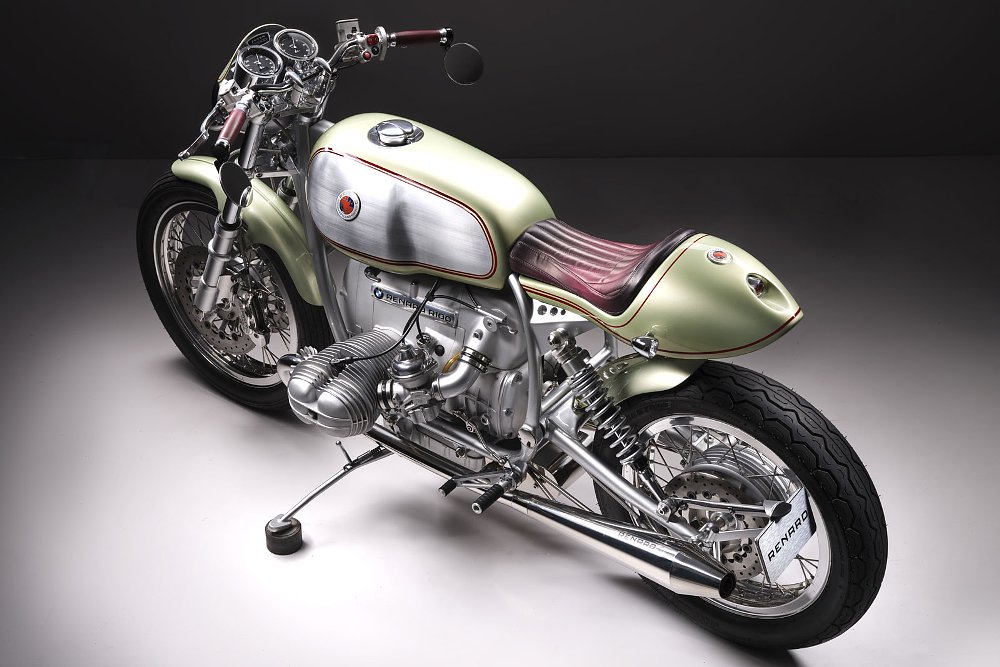
"Our design concept was to create a café racer-style single-seater that focused on the riding experience," Andres explains. "Adopting the café racer style typically results in an uncomfortable riding position and poor ergonomics. We aimed to provide excellent riding comfort, safety, and performance within a meticulously crafted package."
All of the work undertaken by the Renard team has been stringently tested. For example, through lab-based stress testing, Renard's R100 frame and suspension configuration has been subjected to the equivalent of 200,000 kilometers of road use. The bikes have also been made a viable purchase for customers throughout Europe by adhering to the continent's strictest homologation rules. And servicing can be performed by any BMW airhead specialist.
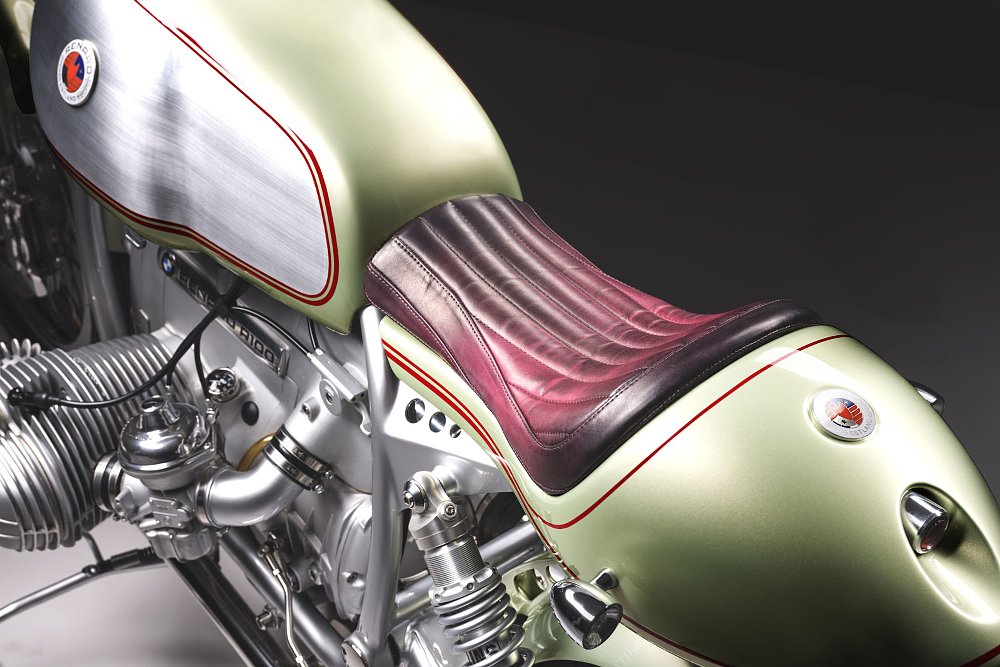
By default, each Reimagined R100 comes with a laundry list of performance upgrades. Starting with the handling, each bike benefits from an Öhlins rear shock and Ceriani-styled fork boasting adjustable Öhlins internals. Stopping power comes courtesy of Beringer, with twin 300 mm discs paired to six-piston calipers at the front. The wheels are lightweight Boranni spoked aluminum rims wrapped in Bridgestone Accolade rubber.
Each Reimagined R100 also benefits from a comprehensive aesthetic overhaul. Topping the list of changes is the all-new aluminium bodywork, which converts the BMW tourer into a single-seat racer. Complementing the sportier silhouette are a wide seat, low handlebar, and Tarozzi rearset footpegs arranged to optimize comfort. Custom grips, Smiths gauges, Beringer levers and reservoirs, Motogadget mirrors, and Renard's own switchgear complete the premium look of the cockpit.
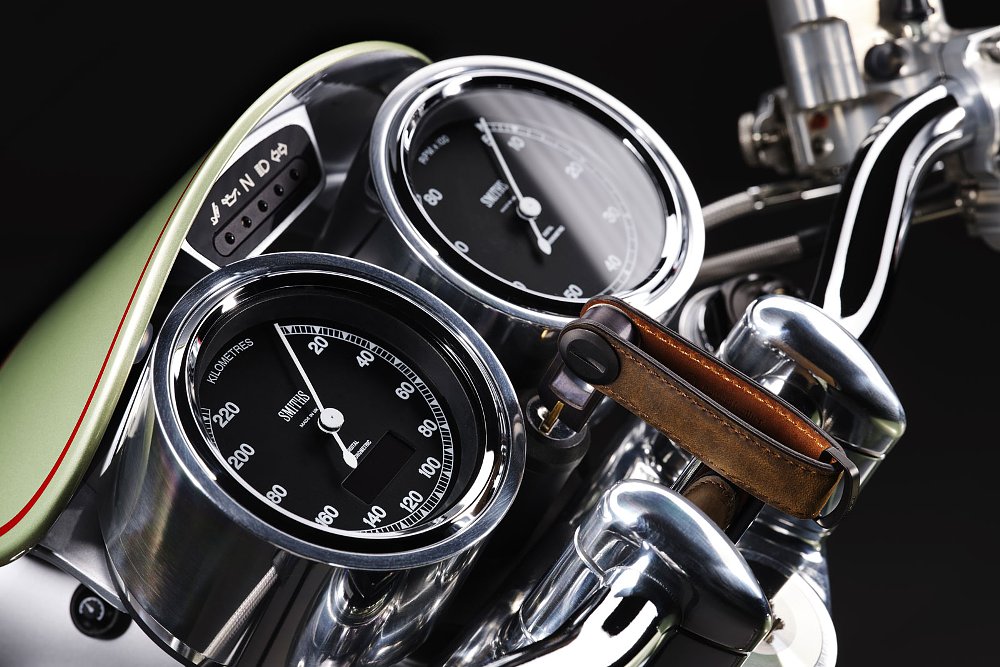
Delving deeper, you'll find new electronics from Motogadget and a completely rebuilt boxer twin engine. Customers have the choice of two engine configurations. By default, each engine gets a lighter R-series flywheel, a 410W generator, lighter pistons, a larger oil crankcase, and a bevy of other minor improvements. For those who want more grunt, there's a tuned version that boasts 80 horsepower and 95 Newton-meters (70 foot-pounds) of torque. This is achieved through increased compression, dual spark plugs, a lighter crankshaft, and larger intake valves. All bikes also get a fully street-legal performance exhaust.
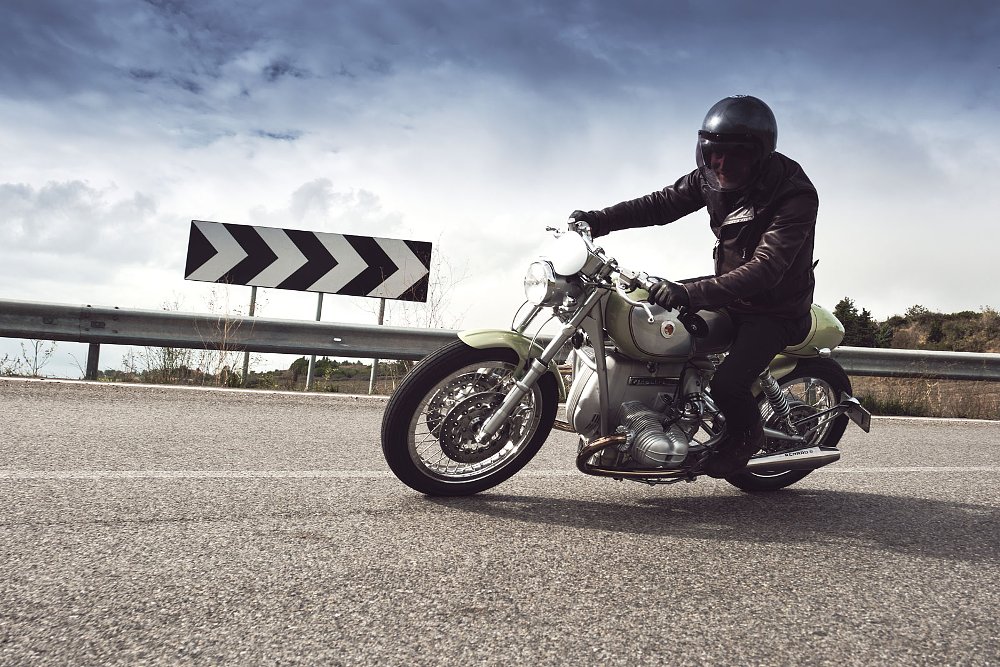
Finally, to allow customers the ability to make their Reimagined R100 unique, they can stipulate the seat and paint colors, pinstriping style, finish on the alloy parts (polished or brushed), and small details such as nickel or gold-plate finishes on various engine components.
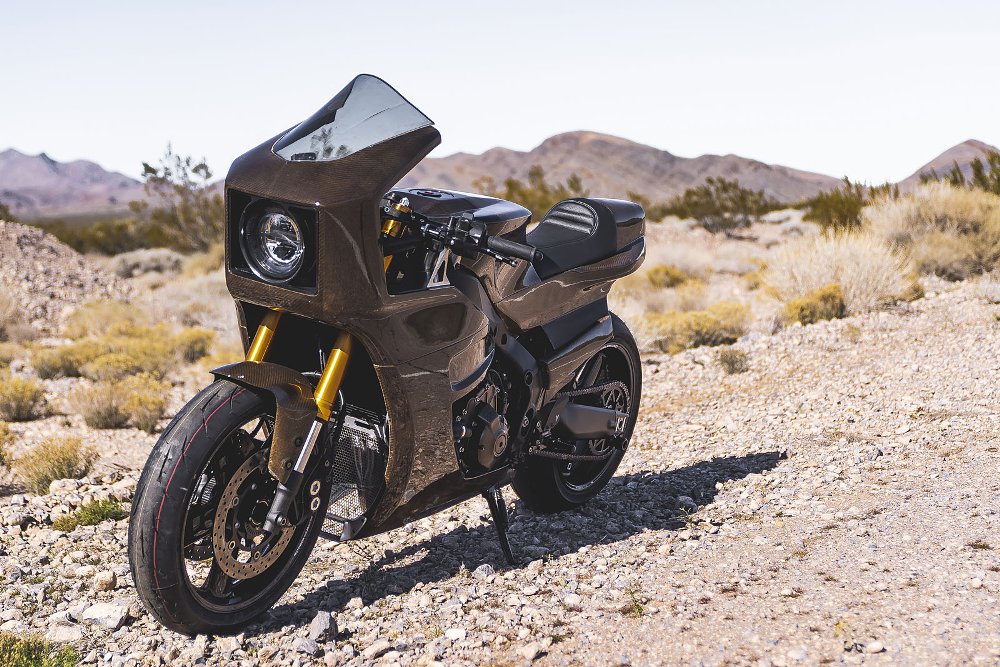
CROIG Yardbuilt Yamaha XSR900 SV2
CROIG, aka @caferacerofinstagram, has amassed an Instagram following of over a million followers. That's quite an achievement for a privately run account with zero marketing budget. CROIG is the brainchild of moto enthusiast, Minnesota-based David Chang. On the CROIG Instagram account, David diligently posts motorcycle photos and videos to satisfy his audience's constant craving for two-wheeled content.
As a result of his Instagram success, David has had the opportunity to realize some of his other ambitions. These include raising money for charities he supports with his philanthropic business partner, Ben Holmes. As you'd expect, getting access to an audience of over one million motorcycle enthusiasts is an attractive proposition for motorcycle brands. As a result, the pair have managed to bolster their charity work through collaborative projects. Their latest has seen them team up with Yamaha and its long-running Yardbuilt series.
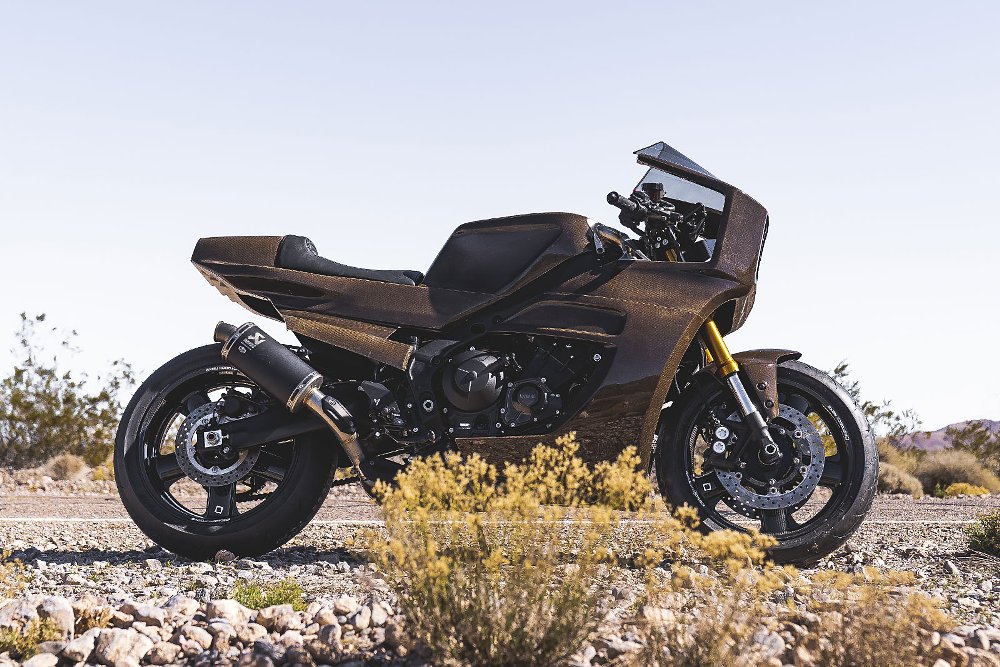
"This XSR900 is the second build we've done with Yamaha's Yardbuilt program. It's also our second Built For Good campaign, where we build a custom motorcycle that is given away to raise money for Waves For Water, a nonprofit that helps provide clean water for those in need," says David.
This custom XSR900 was inspired by 1980s race bikes, in particular Yamaha's own TECH21 FZ750. The TECH21 was a factory race bike ridden by legendary racers Kenny Roberts and Tadahiko Taira in the Suzuka 8 Hours endurance race and the styling similarities here are undeniable. To realize their vision, David and Ben partnered with Strange Industries in Los Angeles. With David's concept, Strange Industries used both traditional modeling techniques and rapid prototyping technologies to fabricate the bodywork.
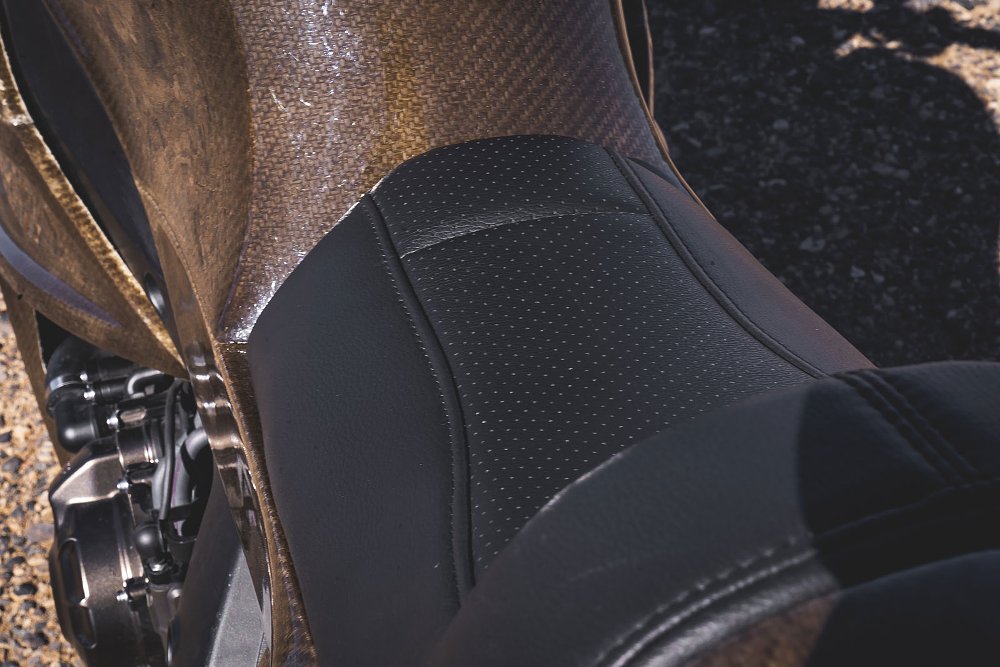
"We took a modern approach by scanning the bike after the foam shaping then refined everything digitally. We then 3D-printed bucks to create molds for the final carbon fiber bodywork," David explains. "We flew with the bodywork to Amsterdam, where SV1 was assembled at Yamaha HQ. It was then unveiled at the 2023 Bike Shed Moto Show in London a few days later."
This bike, aptly named SV2 (Strange Version 2), wears similarly styled bodywork as the first bike. This time, however, the team opted to use ampliTex, a flax-based fiber reinforcement fabric by bComp which is more eco-friendly and sustainable than carbon fiber. All of the parts seen in these photos show the ampliTex bodywork in its natural state but David plans to add some unique race livery to it before the bike's debut at the Red Bull Grand Prix of the Americas in Texas. Interestingly, the bodywork has been designed to bolt on, and David says there's a chance they will produce a kit in the future.
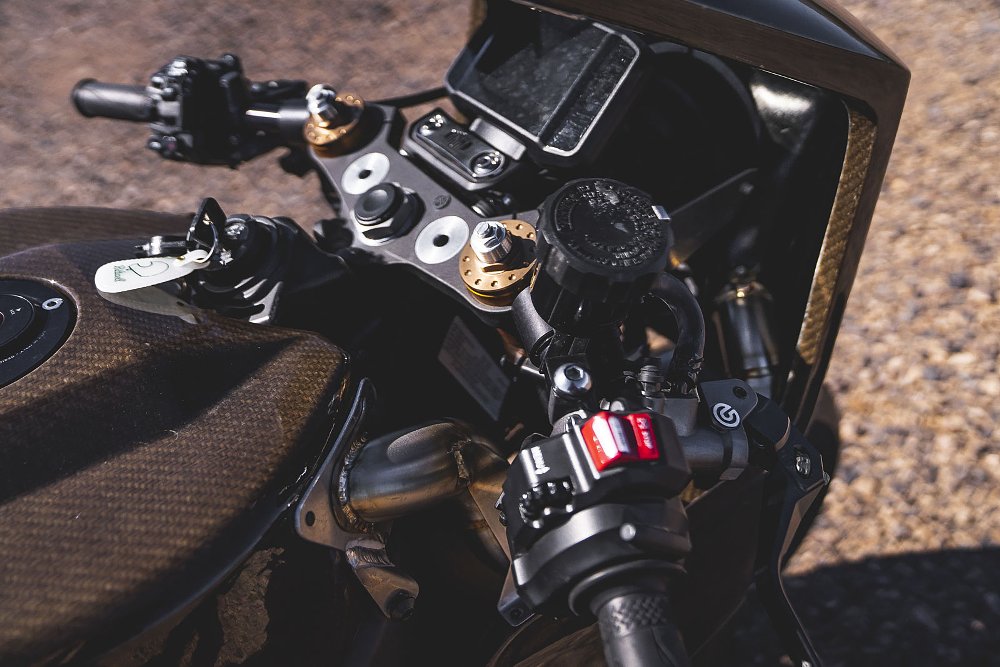
In addition to the radical bodywork, SV2 wears a spattering of premium upgrade parts from CROIG's build partners. These include ultra-lightweight Rotobox RBX2 carbon fiber wheels, Bridgestone RS10 rubber, and a complete Öhlins suspension package. Finally, although the engine is essentially stock, there's an Akrapovič exhaust system to free things up a little.
After SV2's debut in Texas, the bike will be paying a visit to a handful of motorcycle shows around the United States. It will then be given away to help raise funds for the Waves for Water Foundation. For those interested in seeing the build process of this bike, you can check it out on CROIG's YouTube channel.
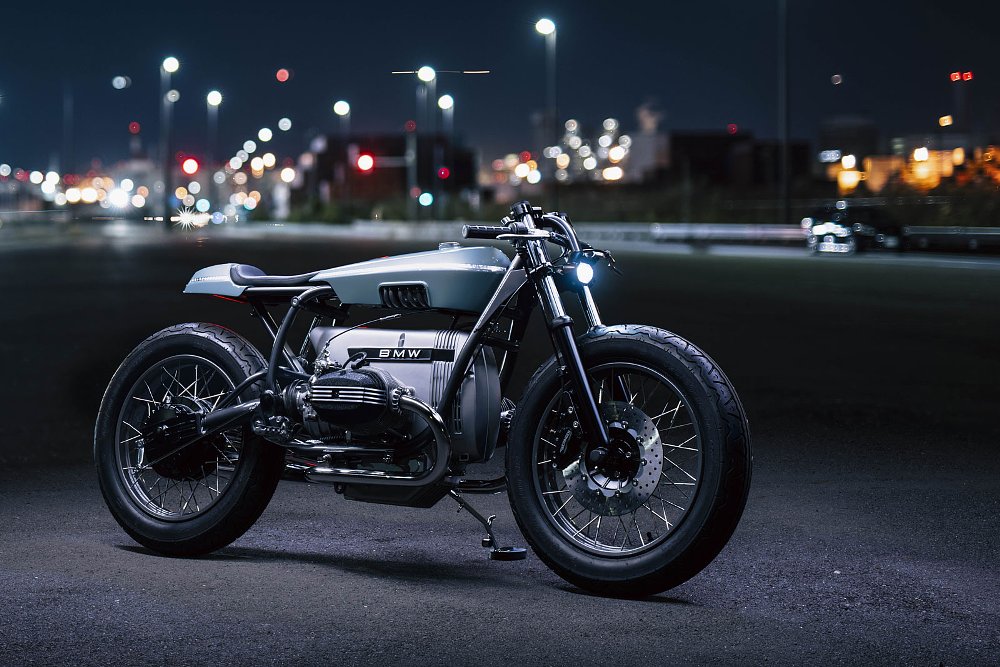
Wedge Motorcycles BMW R100RS showstopper
Our friends in the land of the rising sun never fail to impress. One Japanese builder who is always on my radar is Takashi Nihira and his workshop Wedge Motorcycles (Instagram). Takashi doesn’t usually aim to break molds with his projects. Instead, he uses his keen eye to subtly improve the overall appearance of a motorcycle. Finished to exacting standards and built to be ridden, his custom bikes are the kind that make you wish manufacturers had built them that way in the first place. For his latest project, though, Takashi has deliberately built something out of the ordinary.
This project began with an unusual customer request. Rather than stipulating the style, the customer set Takashi two tasks. The first was that the build must be based on a two-valve BMW boxer and the second was that the bike should go on display at the venerable Yokohama Mooneyes Hot Rod Custom Show.
"I didn't have this style or detail in my mind from the beginning. I just wanted to build a new style that I had not built before," Takashi admits. "In the end, I had nothing to compare the end result to and I was very worried about whether this design would be accepted."
The project began with the acquisition of a BMW R100 RS, which was promptly stripped of all of its original bodywork. Takashi's approach to fabricating the bike's tinware was traditional, but the design was very much unorthodox.
"The fuel tank and tail cowl are rounded but also have character edges, similar to the pressed seams found on a mass-production bike," Takashi points out. "The line that runs through the side of the tank establishes the bone line. The lines of the tank converge as they move toward the end of the '80s-inspired seat cowl."
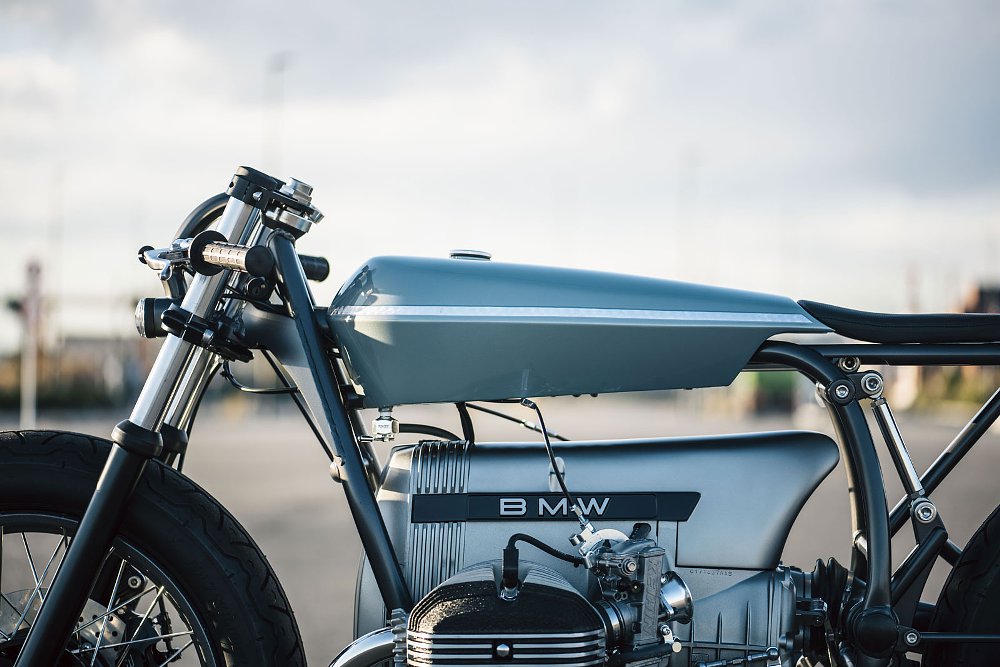
In addition to the slender fuel tank and tail unit, Takashi has built an entirely new cover for the top half of the boxer twin. "The only engine that can be utilized as part of the exterior is the air-cooled BMW flat-twin engine, where the upper engine cover can be rebuilt by hand." Formed from more aluminum sheet, the engine now has a smoother, more modern look that pairs well with the revised bodywork.
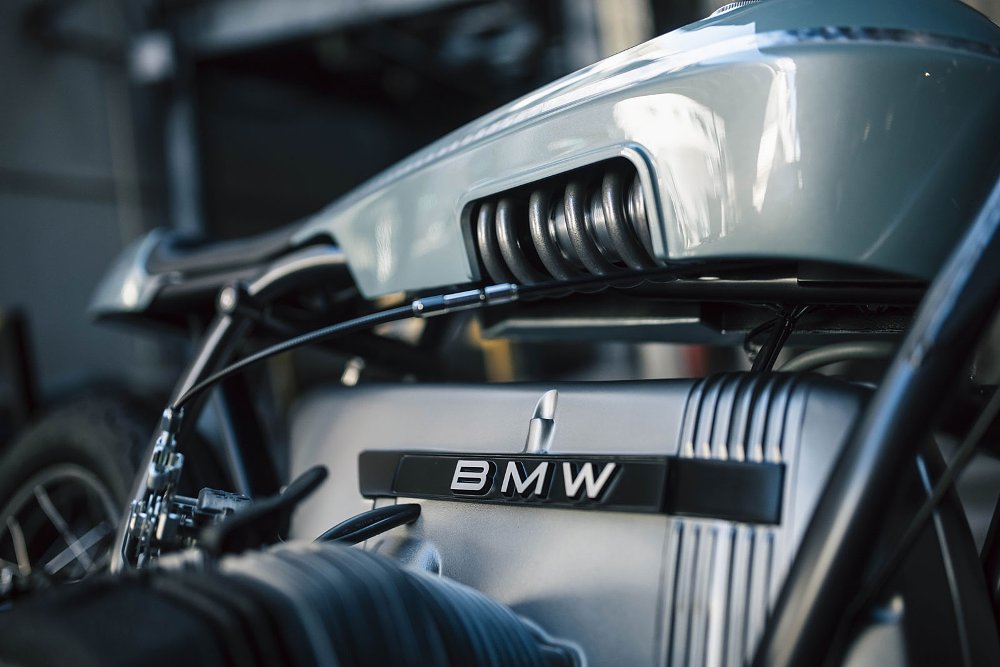
A stand-out detail of Takashi's fuel tank is the integration of the rear suspension. "When my design was roughly established, I noticed the rear suspension of R100RS was very prominent. Without it, the body lines would be further emphasized, so I decided to transplant the rear suspension elsewhere," he explains.
To achieve his goal, Takashi designed and fabricated a linkage system that is housed beneath the fuel tank and alongside the frame. The subframe is custom, too, and includes mounts for the suspension linkages and a support for the tail unit. The resulting design looks like a rigid setup from the left but on the right the secret is revealed by a cutout in the tank.
The suspension isn't the only thing that's been hidden on this bike to reduce clutter. All of the electrical components are housed within a case beneath the engine cover along with the fluid reservoirs for the brakes. Additionally, Takashi opted for tubeless R100R wheels, since they don't require nipples on the spokes, which would have added visual clutter.
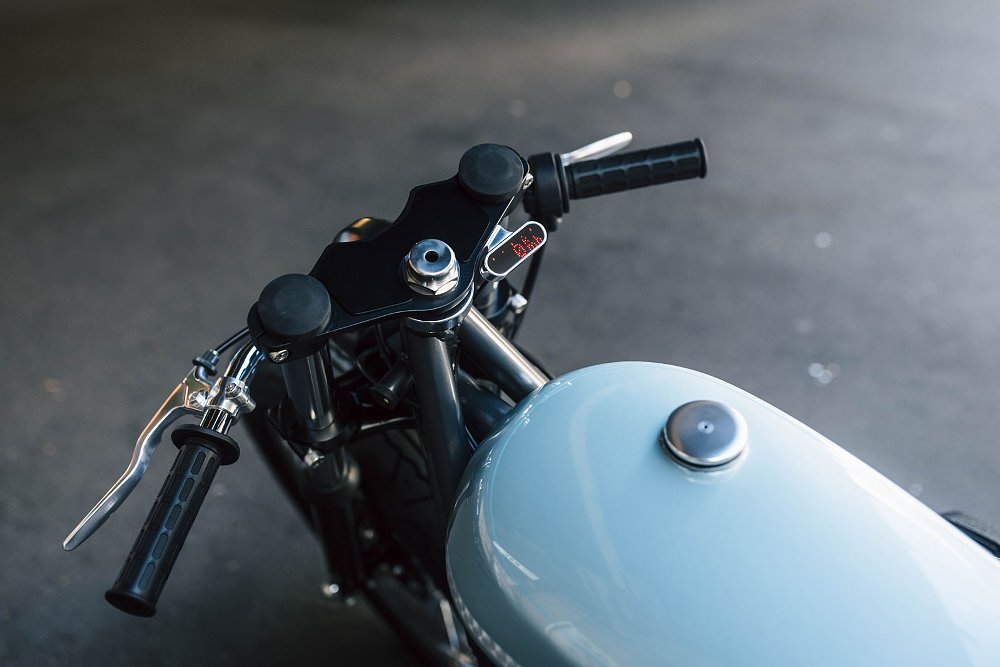
The front end of this BMW is where things get interesting. In keeping with the café racer design approach, "The design of the front end is centered around the headlight," he says. "I wanted to make the headlight as small and discrete as possible and came up with the idea of a headlight integrated into the handlebars. Typically clip-on handlebars are clamped to the forks. Here they are mounted on a multi-sided light stay that connects the upper and lower yokes."
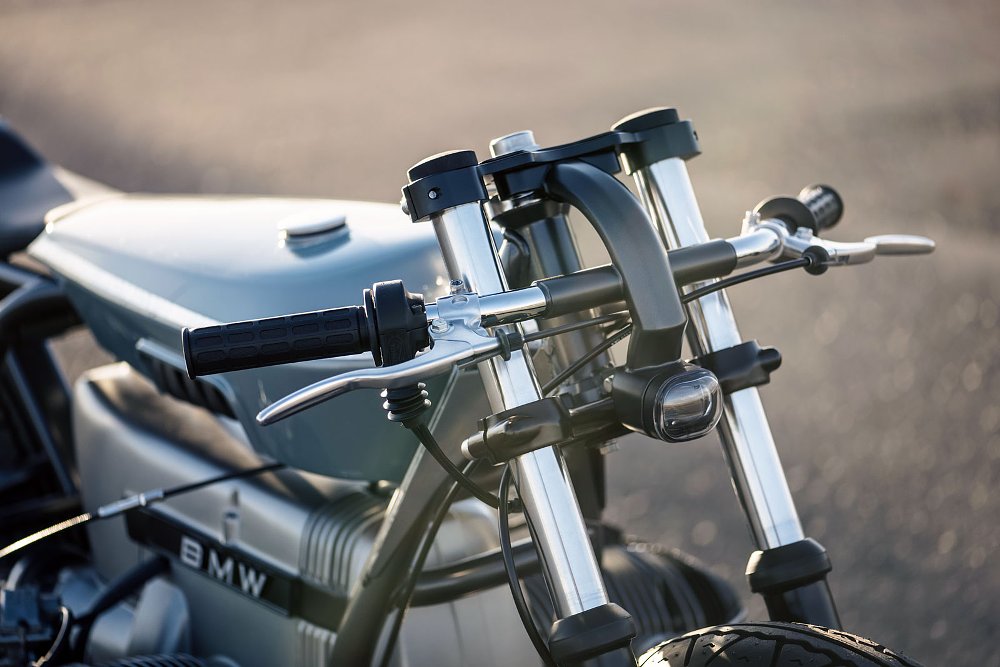
Wrapping up the list of changes is a two-into-two exhaust system with stacked mufflers similar to those seen on classic Japanese bikes, like Kawasaki's Z1. The rebuilt boxer twin is also sporting Keihin FCR carbs with velocity stacks to eke additional horses out of the engine.
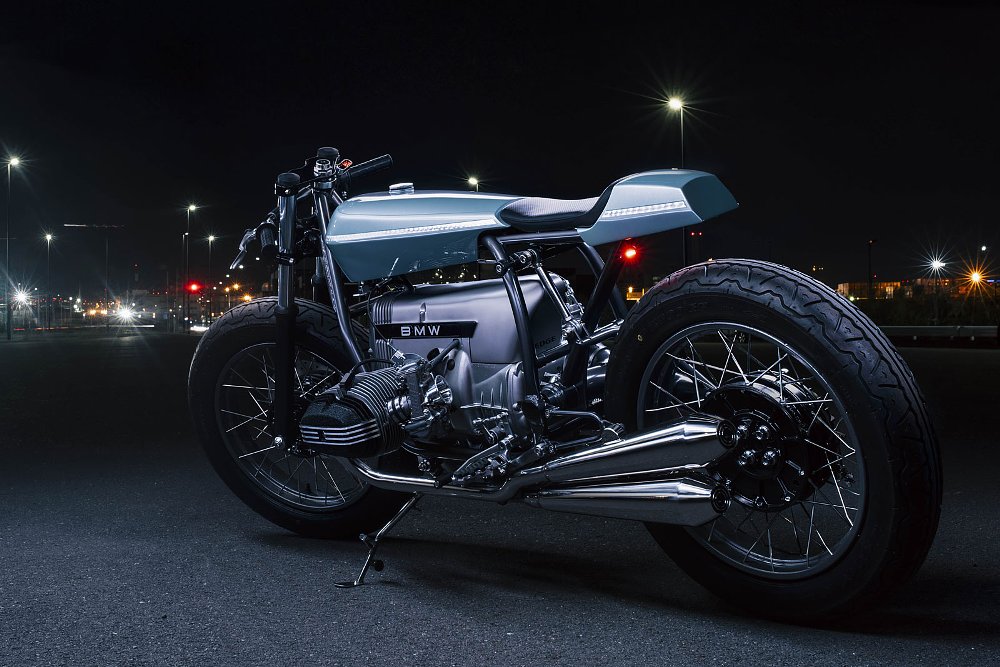
Upon displaying his neo-retro R100RS café racer at the 2023 Mooneyes show, Takashi's concerns about the public's reaction were put to rest. "I was thrilled to find that it was highly appreciated, not only by customers but also by other custom bike builders," he says. As it turns out, the show's judges were impressed, too, as they named this unique R100RS the event's "Best Café Racer."


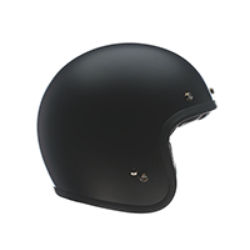

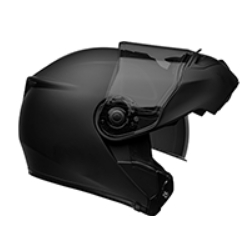

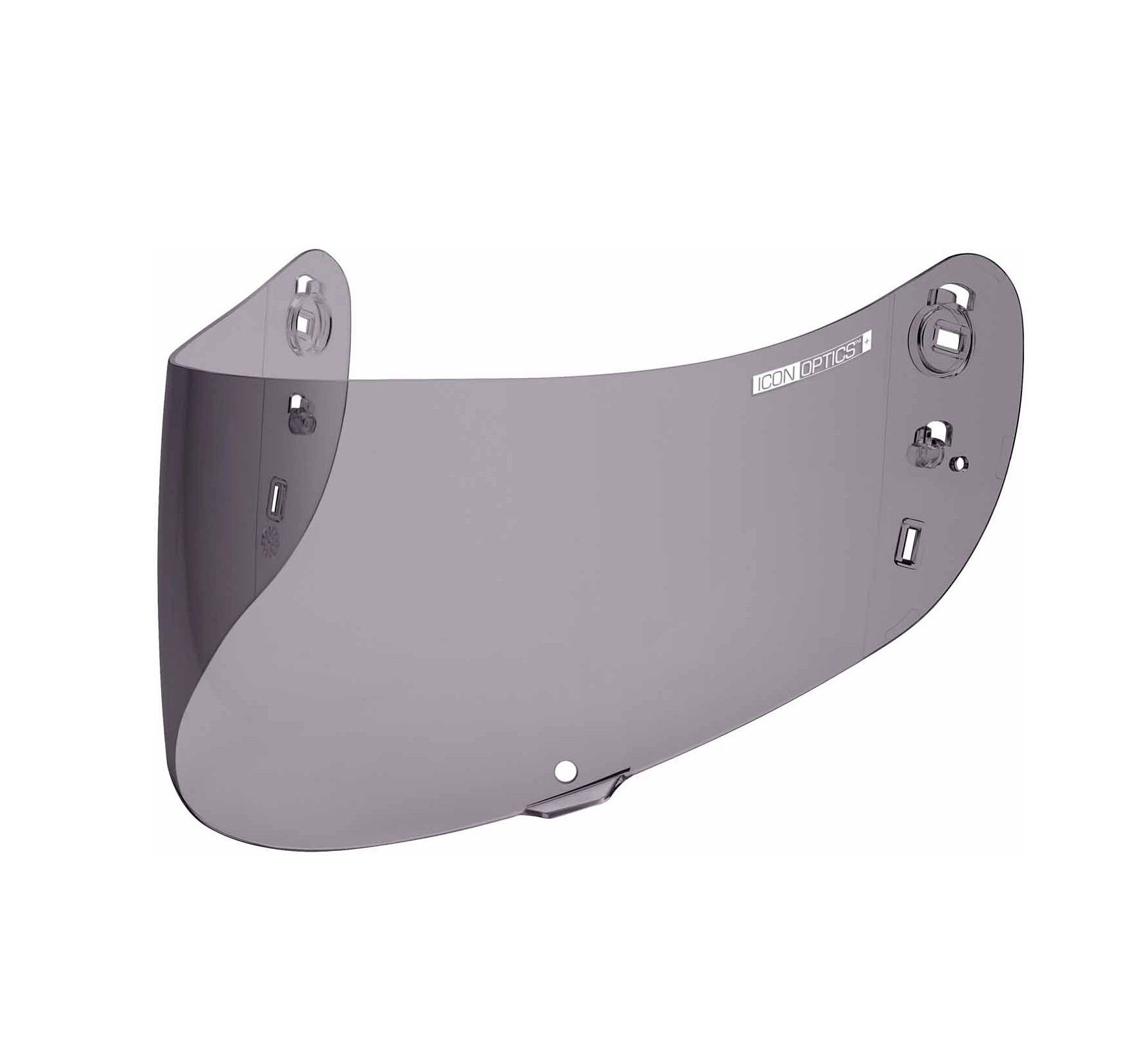
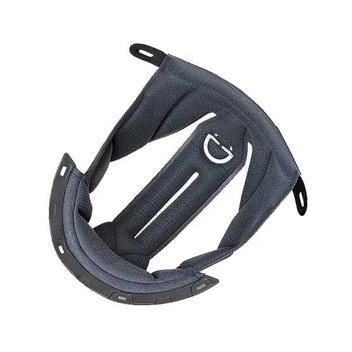
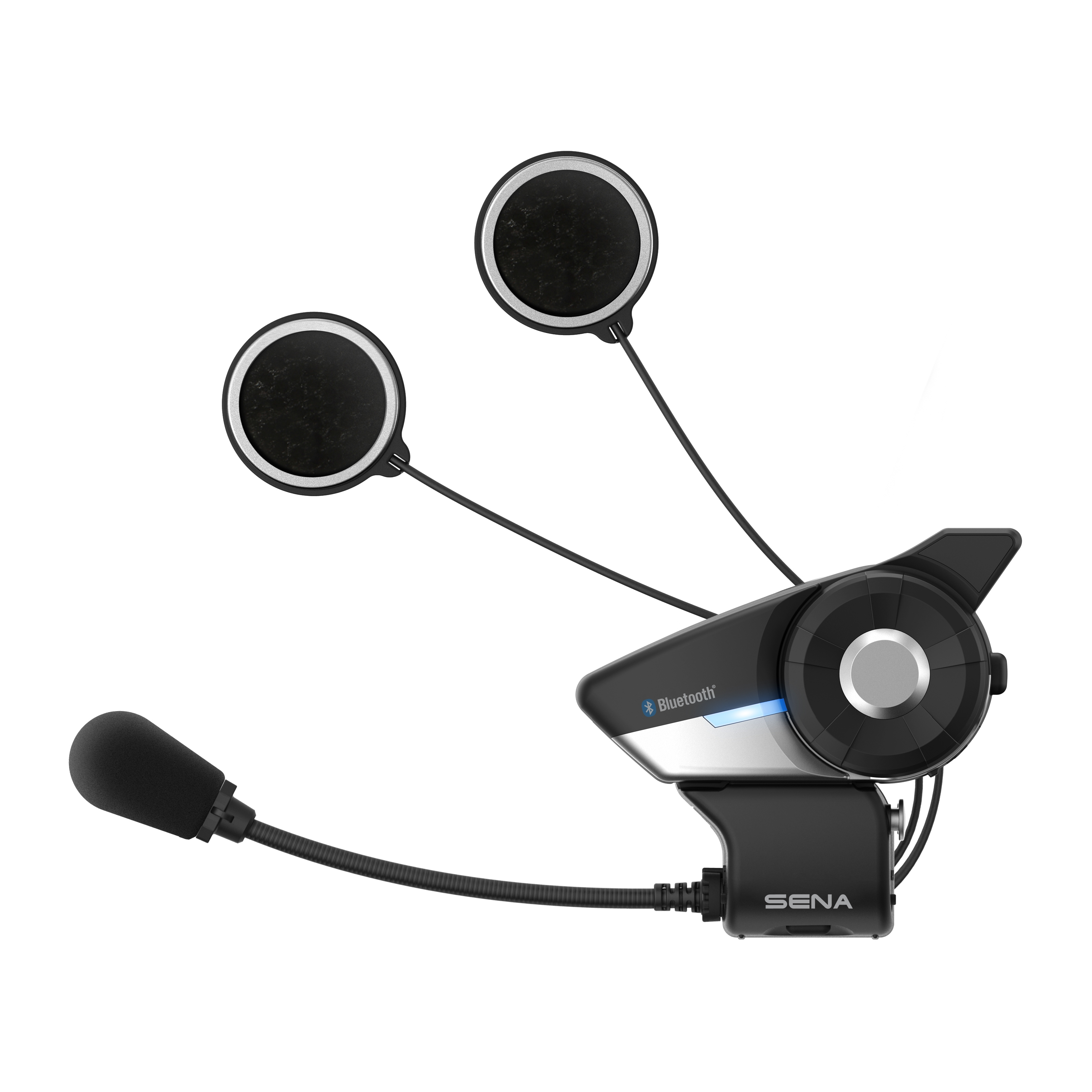


 Membership
Membership





